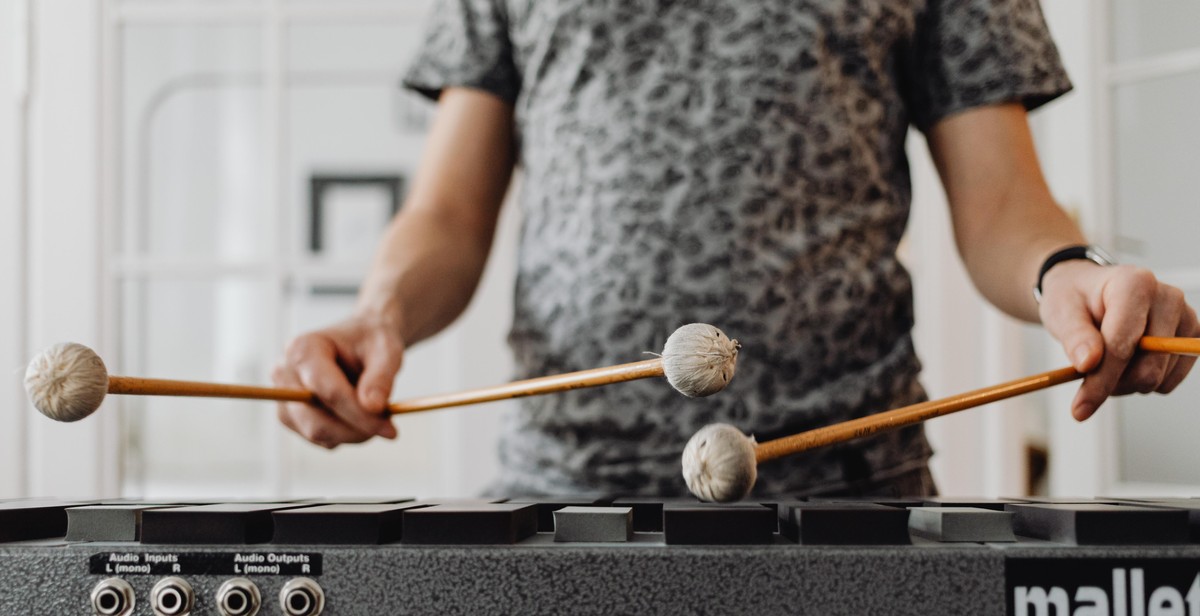How to Play the Xylophone: Beginner’s Guide to Mallet Techniques and Note Reading
The xylophone is a percussion instrument that belongs to the family of tuned percussion instruments. It consists of a series of wooden bars that are struck with mallets to produce sound. The bars are arranged in the same way as a piano keyboard, with the lower notes on the left and the higher notes on the right. In this article, we will provide a beginner’s guide to playing the xylophone, including mallet techniques and note reading.
Getting Started
Before you start playing the xylophone, you will need to make sure that you have the right equipment. This includes a xylophone, a pair of mallets, and a music stand. You will also need to make sure that your xylophone is in good condition and is tuned correctly.
Mallet Techniques
There are several techniques that you can use to play the xylophone with mallets. These include the basic stroke, the full stroke, and the double stroke. Each of these techniques produces a different sound and can be used to play different types of music.
Note Reading
To play the xylophone, you will need to be able to read music notation. This involves understanding the staff, the clef, and the notes themselves. Once you have a basic understanding of music notation, you will be able to read and play simple melodies on the xylophone.
Overall, playing the xylophone can be a fun and rewarding experience. With the right equipment, mallet techniques, and note reading skills, you will be able to play a wide variety of music on this unique and versatile instrument.

Choosing the Right Xylophone
When it comes to choosing the right xylophone, there are a few factors to consider. In this section, we’ll discuss the types of xylophones, selecting the right size, and considering the material.
Types of Xylophones
There are two main types of xylophones: the concert xylophone and the marimba. The concert xylophone is typically used in orchestras and bands, while the marimba is used in Latin and jazz music.
When selecting a xylophone, it’s important to choose the right type for your needs. If you’re a beginner, a concert xylophone is a good option as it’s versatile and can be used in a variety of musical genres. However, if you’re interested in playing Latin or jazz music, a marimba may be a better choice.
Selecting the Right Size
Xylophones come in a range of sizes, from small practice instruments to full-size concert xylophones. When selecting a xylophone, it’s important to choose the right size for your needs.
If you’re a beginner, a smaller practice xylophone may be a good option as it’s more affordable and easier to transport. As you progress, you may want to invest in a larger instrument with a wider range of notes.
Considering the Material
Xylophones can be made from a variety of materials, including wood, fiberglass, and synthetic materials. Each material has its own unique sound and feel.
Wooden xylophones are the most common and are known for their warm, rich sound. However, they can be expensive and require more maintenance than other materials.
Fiberglass xylophones are durable and weather-resistant, making them a good option for outdoor performances. Synthetic xylophones are affordable and lightweight, but may not have the same sound quality as wooden or fiberglass instruments.
| Type | Pros | Cons |
|---|---|---|
| Wooden | Warm, rich sound | Expensive, requires maintenance |
| Fiberglass | Durable, weather-resistant | May not have the same sound quality as wooden instruments |
| Synthetic | Affordable, lightweight | May not have the same sound quality as wooden or fiberglass instruments |
Ultimately, the material you choose will depend on your budget and personal preferences.

Mallet Techniques
Grip and Posture
The way you hold the mallets and your posture can greatly affect your playing technique. Here are some tips:
- Hold the mallets near the end of the shaft with a relaxed and comfortable grip.
- Position your hands in a way that is comfortable for you, but try to keep them at a 90-degree angle to the xylophone.
- Stand or sit up straight with your shoulders relaxed.
- Keep your elbows close to your body to maintain control and precision.
Striking the Bars
The way you strike the bars can greatly affect the sound and tone produced. Here are some tips:
- Strike the bar near the center to produce the best tone.
- Use a flicking motion with your wrist to strike the bar.
- Avoid hitting the bar too hard or too softly.
- Practice hitting the bars at different angles to produce different tones.
Playing Techniques
There are different techniques you can use to produce different sounds and effects. Here are some techniques you can try:
| Technique | Description |
|---|---|
| Rolls | Play a quick succession of notes by rolling the mallets over the bars. |
| Glissandos | Slide the mallets along the bars to produce a smooth and continuous sound. |
| Mallet Dampening | Quickly stop the vibration of the bar by touching it lightly with the mallet. |
| Mallet Lift | Lift the mallet off the bar immediately after striking it to produce a staccato sound. |
Practice these techniques slowly and gradually increase your speed and precision. Remember to maintain proper grip and posture to avoid injuries and achieve better control.

Note Reading
Learning to read notes is an essential part of playing the xylophone. It may seem daunting at first, but with practice, anyone can become proficient in reading notes. The first step is understanding the staff.
Understanding the Staff
The staff is a set of five horizontal lines and four spaces that represent different pitches. The lines and spaces are numbered from bottom to top, with the bottom line being the first and the top line being the fifth. The spaces are also numbered from bottom to top, with the bottom space being the first and the top space being the fourth.
Each line and space on the staff represents a different note. The notes on the staff are written using different symbols, which indicate the pitch and duration of the note.
Reading Notes on the Xylophone
Reading notes on the xylophone is similar to reading notes on the staff. Each note on the xylophone corresponds to a specific note on the staff. The notes on the xylophone are arranged in a specific order, with the lowest note on the left and the highest note on the right.
The notes on the xylophone are written using different symbols, which indicate the pitch and duration of the note. The symbols used on the xylophone are similar to those used on the staff, but they are modified to indicate which mallet should be used to strike the note.
It is important to practice reading notes on the xylophone regularly. Start with simple songs and gradually work your way up to more complex pieces. With practice, you will become proficient in reading notes on the xylophone and be able to play a wide range of songs.

Playing Techniques
Basic Exercises
Before getting into playing actual songs on the xylophone, it is important to learn some basic exercises to develop your mallet techniques. Start by practicing the following exercises:
- Single Stroke Roll: Alternate striking the keys with each mallet. Start slowly and gradually increase your speed.
- Double Stroke Roll: Strike the key twice with each mallet before moving to the next key. This exercise helps with finger control.
- Paradiddle: A four-note pattern that goes right, left, right, right or left, right, left, left. This exercise helps with coordination between the hands.
Playing Simple Songs
Once you have mastered the basic exercises, it’s time to start playing simple songs. Start with children’s songs or folk songs that have simple melodies and rhythms. Here are some tips:
- Start Slow: Don’t rush into playing the song at full speed. Start slow and gradually increase your speed as you become more comfortable with the song.
- Practice Hands Separately: If you’re having trouble playing the song with both hands, try practicing each hand separately until you are comfortable with each part.
- Use a Metronome: Playing with a metronome helps you stay on beat and develop your sense of timing.
Playing with Accompaniment
Playing with accompaniment adds a whole new dimension to your xylophone playing. Here are some tips for playing with accompaniment:
- Listen: Listen carefully to the accompaniment to make sure you are playing in time with the other musicians.
- Stay in Your Lane: Make sure you are not overpowering the other musicians. Your role is to complement the other instruments, not compete with them.
- Be Flexible: Be prepared to adjust your playing if the accompaniment changes or if the conductor asks you to play a certain way.
| Technique | Tips |
|---|---|
| Basic Exercises | Start slow and gradually increase speed, practice each exercise until comfortable, use a metronome. |
| Playing Simple Songs | Start slow, practice hands separately, use a metronome. |
| Playing with Accompaniment | Listen to other musicians, stay in your lane, be flexible. |

Conclusion
Learning to play the xylophone is an exciting and rewarding experience. With the proper techniques and note reading skills, you can create beautiful music and delight your audience. Remember to start with the basics and gradually build your skills by practicing regularly.
When playing the xylophone, it’s important to maintain proper posture and grip on the mallets. This will not only improve your sound quality but also prevent injury. Additionally, understanding the different types of mallets and their uses can enhance your performance and add variety to your music.
Mastering note reading is also essential for playing the xylophone. By learning the different notes and their corresponding positions on the instrument, you can play songs with ease and accuracy. Take your time and practice regularly to improve your note reading skills.
Finally, don’t be afraid to experiment and have fun with your music. The xylophone is a versatile instrument that can be used in a variety of genres, from classical to pop. With practice and dedication, you can become a skilled xylophone player and share your talent with the world.
- Remember to start with the basics and gradually build your skills by practicing regularly
- Maintain proper posture and grip on the mallets
- Understanding the different types of mallets and their uses can enhance your performance and add variety to your music
- Mastering note reading is essential for playing the xylophone
- Don’t be afraid to experiment and have fun with your music
Thank you for reading this beginner’s guide to mallet techniques and note reading on the xylophone. We hope that this article has provided you with valuable insight and knowledge to help you on your musical journey.
